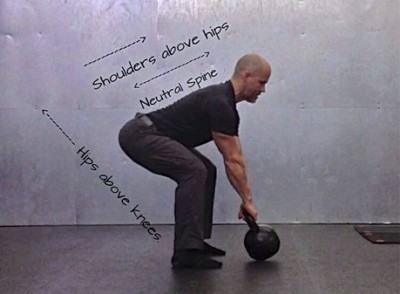
Move Strong – Owning the Deadlift and the Swing
This article is aimed at those who want to get strong, improve athletic performance and reduce their risk of injury. If you are a competitive powerlifter, you may have to bend some of these “rules” to break the bar off the floor.
The deadlift and the swing are two of the best exercises out there for strength, power and resilience. Done properly, they will build your core, your butt, your back, your grip strength and improve your posture. Done poorly, they’re likely to cause tissue damage and pain. So, what are the key elements to these lifts that will give you maximum benefit, with minimal risk?
First, lets consider why I’ve grouped these seemingly different exercises together. The deadlift and the swing are both what we call hip hinge movements. It is a fundamental movement pattern that forms the basis for a whole raft of complex movements such as the act of sitting and standing up again, walking, running, jumping and more.
Mobility
To perform a good hip hinge, you need adequate mobility. Tight hips and hamstrings will limit your ability to hinge with sufficient depth. Be sure you have adequate mobility.
Stability and Control
The hinge requires the firing of many different muscles in a coordinated sequence. If this sequence is off, we end up with tissue overload, and possibly pain and risk of injury. If you find it hard to coordinate the movement while standing, regress to the floor and work your way up to standing.
The Glute Bridge
The Glute Bridge is a hip hinge on your back. The key with this exercise is to keep your spine neutral. Do not push up with your lower back. Your glutes should be doing most of the work.
The Quadruped Rocker
Quadruped Rocker is a hip hinge in crawling posture. It trains the isolation of hip flexion and extension in a suspended position for the spine.
The Kneeling Hinge
Kneeling Hinge is very close to the hip hinge just without the ankle joint’s involvement. Again the key is keeping that neutral spine.
The Standing Hinge
The Standing Hip Hinge forms the foundation for your deadlift, your swing, clean, snatch and more. Using a dowel can help give the feedback you need to ensure your spine remains neutral.
If you own the hip hinge in all these postures, you can own your deadlift and swing. Obviously each needs its own level of refinement, but without the foundations, you’ll have a hard time getting there.
Remember – when training deadlifts and swings, (or any other lift for that matter) if your technique starts to fail, change the volume not the song. That is to say, drop the weight down so that your technique is clean, don’t just push through to the end of the set and compromise your posture.
